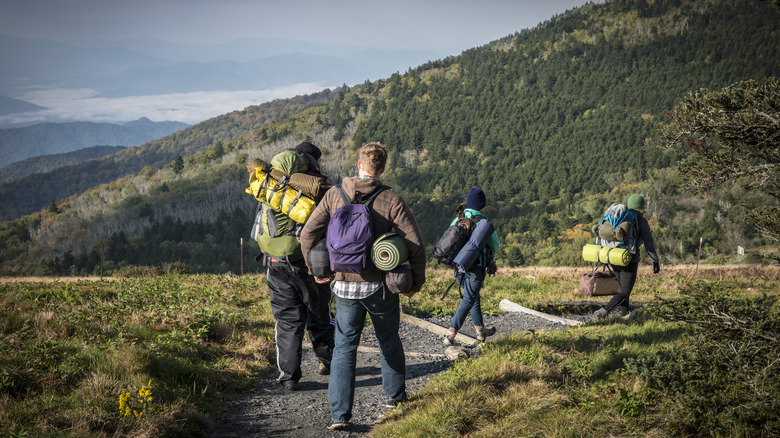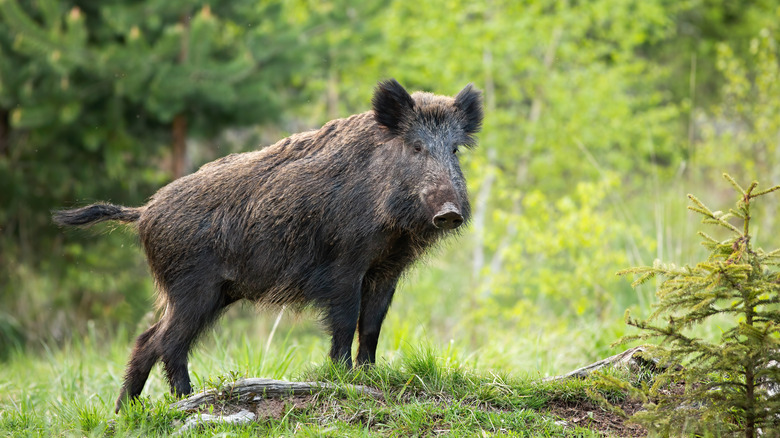5 Creatures To Beware Of When Adventuring In The Appalachian Mountains
The Appalachian Mountains stretch some 2,000 miles through 13 states within the Southeast and Northeast regions of the United States. The renowned Appalachian Trail carves a nearly 2,200-mile path through the mountain range from Georgia to Maine. Each year, millions of hikers a portion of the trail. Additionally, hordes of outdoor enthusiasts spend time adventuring and camping throughout the Appalachians.
Although the main reason most people visit the Appalachian Mountains is to spend time in nature and with wildlife, there are reasons visitors should exercise caution. The key to having a safe and fun adventure there is to recognize the real threats and try to avoid them.
Like any remote region, many tales of cryptid creatures such as Bigfoot abound in the Appalachia but are unproven. There are also some creatures that are very much proven to live there and can be dangerous, such as the Eastern Cougar (mountain lion), but an encounter with them is extremely rare because of the scarcity of these creatures. Many other common mammals are regularly seen, but not typically a danger unless they are rabid (which can happen). However, here are five known creatures adventures are quite likely to encounter and should beware of when adventuring in the Appalachian Mountains.
Snakes can inflict a deadly bite
As one might expect, there are a handful of snake species that may be encountered in the Appalachian Mountains and along the Appalachian Trail. The vast majority of these creatures are non-venomous. However, there are a pair of venomous serpents that adventurers need to keep an eye out for while in the Appalachians. Copperheads and rattlesnakes are each considered among the most dangerous snakes in North America and can be found throughout the Appalachian Range.
Both copperheads and rattlesnakes are pit vipers and sport the tell-tale triangular head and pitted nostrils of this family of snakes. As their name suggests, copperheads are coppery in color and have a darker hourglass pattern running the length of their body. Rattlesnakes, too, are aptly named, as they use their rattles to give a distinctive warning.
Typically, snakes are wary and try to avoid human contact. However, it is important to watch where you step, particularly when stepping over fallen trees or rocks. Snakes are often tucked behind such objects or inside rock crevices.
Black bears are becoming more common
Black bears are part of the lore of most mountain regions, including the Appalachians. According to the National Park Service, black bears are the most prevalent and broadly spread bear species across North America. Even considering that, the number of bears throughout the Appalachian Mountain range has actually been increasing in recent years, which means hikers, campers, and adventurers are all the more likely to encounter them.
Like all wildlife, bears tend to avoid human interaction if possible. Although it is relatively rare, attacks do occur. So, there are a few things hikers and campers should do to reduce the odds of provoking such as an encounter and avoid a bear attack. When moving through the woods, make noise to alert bears to your presence. Additionally, when hiking or camping in bear territory, don't leave food unattended, seal food in airtight bags or containers, cook food away from the tent area, don't sleep with food, and keep dogs leashed as they can attract and even antagonize nearby bears. If hiking along the Appalachian trail, it is also a good idea to check for updates of bear activity before embarking on your hike.
Spiders can be harmful
As you might expect when adventuring in a mountainous forest, spiders are not uncommon and typically not a concern. However, the Appalachians are home to two of the most dangerous spiders in North America — the brown recluse and black widow. These are certainly a pair creatures to beware of and perhaps the best way to avoid them is to be aware of what they look like.
The black widow is one of the more distinctive-looking spiders. Female black widows are shiny black with a bright red or orangish hourglass shape on their abdomen. The male black widows are not as striking. Typically, they are more muted — brown or gray — although they do have red spots. However, it is the female whose bite packs a punch and of which adventurers should be wary.
The brown recluse is relatively mundane-looking. Like many spiders, it is brown or light brown. However, the distinguishing feature of the brown recluse is a dark brown violin-shaped mark on its back. Considering this marking can be difficult to see from a distance, it is best to avoid handling any spiders you may come across just to be on the safe side.
Wild hogs may charge in certain circumstances
Wild hogs are common throughout the Appalachians, especially in the southern portion of the mountain range. While they have long been part of the landscape of the Appalachian region, these wild hogs are considered invasive, and, more disturbingly, their numbers are growing. In fact, the population has grown so substantially in the southern region that there has been a concerted effort to remove as many hogs as possible in recent years in order to mitigate the damage they are causing to the ecosystem.
Despite these efforts, the number of hogs present and seen in the area continues to rise. While it may seem exciting to get a glimpse of such an animal in the wild, hikers and campers in the Appalachian region should consider these animals dangerous and avoid getting close to them if at all possible. If hogs are spotted, give them a wide berth. If it is impossible to pass around them, wait for them to leave before continuing on your trek.
Stinging insects can inflict pain
Although they may not seem intimidating, wasps, bees, hornets, and yellow jackets are considered dangerous, as they are capable of stings that inflict pain and discomfort. For those who happen to be allergic to any of these stinging insects, the results can be much worse. So, even though the other creatures on this list seem more formidable, these stinging insects are much more likely to be encountered and, thus, impact an adventure through the Appalachians.
Like all insects, the warmer months are the time when stinging insects are most active, but it is necessary to keep an eye out for them in all but the coldest periods. The hives and nests of wasps, bees, and hornets are usually visible on tree branches, rock ledges, or manmade structures such as buildings and bridges. It is necessary to be dutiful when looking for them, however, as they are sometimes obstructed from view. Yellow jacket nests are harder to spot, as they are built underground, with only the entry/exit hole being visible.
Whenever these stinging insects are seen — or heard — it is best to avoid the area if possible. If you are known to be allergic, be sure to have Epipen and Benadryl handy when venturing into the Appalachians.





